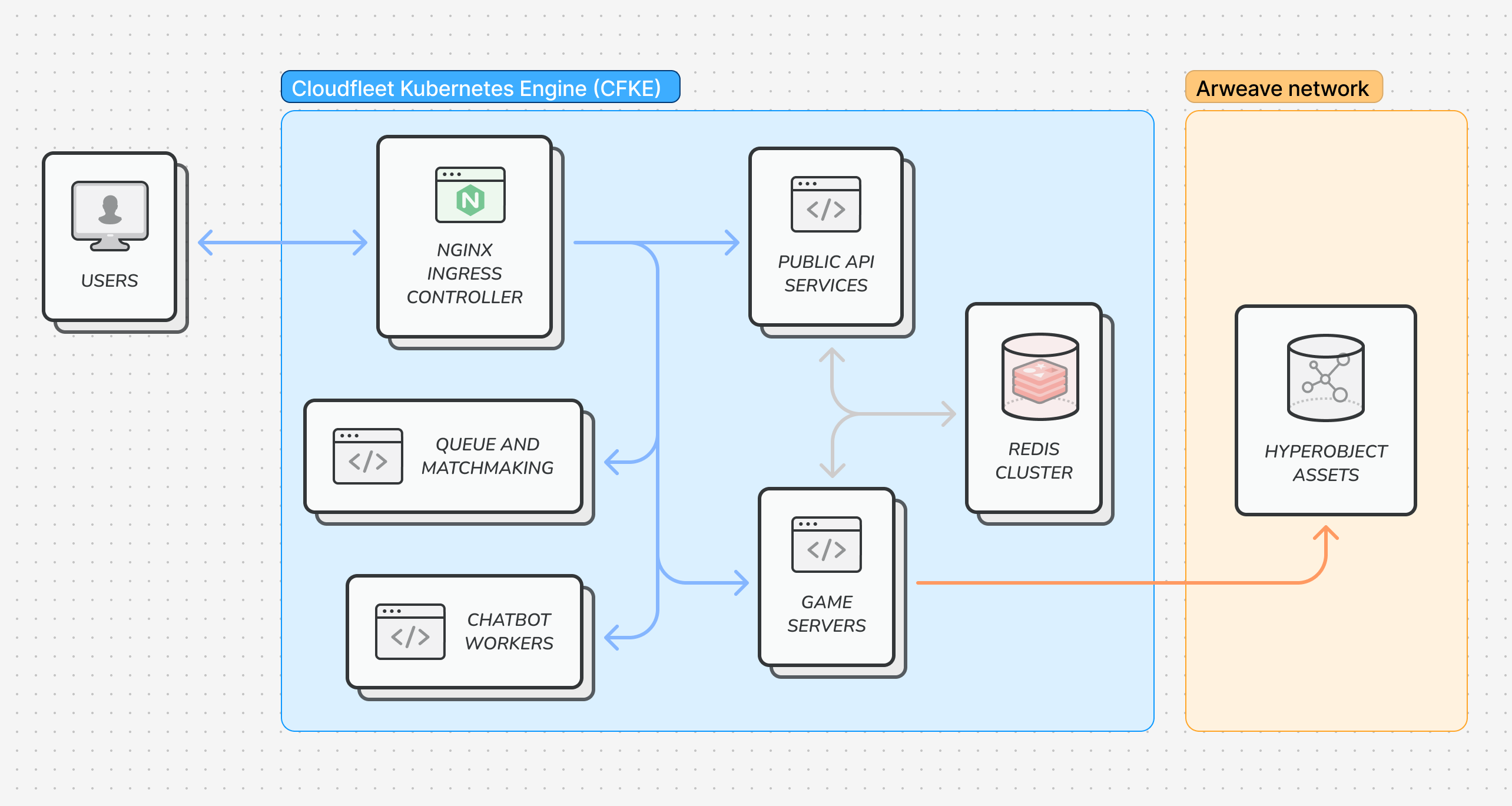Today, billions of people use in-game assets every day across multiple games, virtual worlds, and even as filters on social networks. This number is set to grow rapidly as innovations in AI and platforms like BaseJump make it possible to create games and assets instantly using generative AI. BaseJump is building a new generation of player-owned games and interoperable assets powered by decentralized infrastructure.
Broadside: Battle Mode is BaseJump’s first live game, offering a dynamic and fast-paced PvP experience.

With ambitions to serve millions of users, BaseJump needed a scalable, cost-efficient cloud infrastructure that could adapt to the demands of live gaming. That’s where Cloudfleet came in.
Challenge
Running a modern gaming platform is complex. Managing one with a virtually unlimited number of assets is even more challenging. On top of that, the BaseJump community is spread across the globe and needs to support millions of players on multiple continents.
From a technical perspective, BaseJump’s platform includes everything from game servers and data processing workers to real-time bots and environment generators. Its infrastructure must:
- Deliver low-latency workloads to players worldwide
- Coordinate distributed systems with guaranteed uptime
- Handle sudden bursts of activity from live events and campaigns
The team needed a way to orchestrate all of this reliably, without building a large DevOps organization or locking themselves into a single cloud vendor.
Solution
With a complex system of many independent services, BaseJump turned to Kubernetes for orchestration. However, managing Kubernetes at scale across multiple clouds and regions can be a daunting task. Cloudfleet, with its multi-cloud Kubernetes engine and vendor-agnostic architecture, proved to be the perfect match for BaseJump’s distributed philosophy.
Key components running on Cloudfleet include the Broadside Battle Mode game servers, Battle Buddy Discord bots, backend services that synchronize assets from the hyperobject registry, queue processors, and supporting jobs such as recurring tasks and real-time matchmakers.

To meet their requirements for global reach, low latency, and high availability, BaseJump deployed its production workloads on Cloudfleet’s managed Kubernetes platform, with fleets spanning multiple cloud providers under a unified control plane.
The team operates two main CFKE clusters for staging and production, along with on-demand clusters for testing and development. They use both the basic and pro tiers of Cloudfleet depending on workload requirements and rely on release channels to ensure compatibility with the latest Kubernetes features.
With Cloudfleet’s node autoprovisioning, BaseJump uses Kubernetes primitives to handle game server scaling. When new game sessions start and additional pods need to be scheduled, Cloudfleet automatically provisions nodes in the appropriate region and cloud. By managing the infrastructure behind the scenes, Cloudfleet removed the burden of setting up and maintaining complex environments - provisioning multi-region clusters seamlessly across different clouds to ensure resilience and global reach from day one.
Results
BaseJump’s scale demands cloud infrastructure that can keep pace while keeping costs under control - and with Cloudfleet, they achieved both. The team launched its production environment with more than 50 microservices distributed globally, all coordinated through a single Cloudfleet Kubernetes cluster in the US region.

"We didn’t have to think about node groups, autoscaling, server sizing, or regional availability. Cloudfleet handled it all behind the scenes."
Brent Fitzgerald, CTO & Co-founder, BaseJumpBy running on Cloudfleet, mission-critical components - such as game and API servers and supporting services like Redis clusters - achieved 99.9% uptime. At the same time, deployments scaled dynamically thanks to Cloudfleet’s intelligent autoscaling, ensuring both reliability and responsiveness as demand fluctuated.
All of this was accomplished with a small team and without the need for dedicated DevOps engineers. Cloudfleet’s managed service handled the operational complexity, enabling BaseJump to focus on advancing their platform and growing their community.
Next Steps
As BaseJump continues to grow, Cloudfleet will remain a core part of its infrastructure strategy. With both BaseJump-developed and user-generated games and levels, the team plans to extend existing clusters to new locations and clouds, ensuring low-latency access for players around the world.
With Cloudfleet, BaseJump is building not just games, but the substrate for a new internet - one where creators own their tools and players own their worlds.


